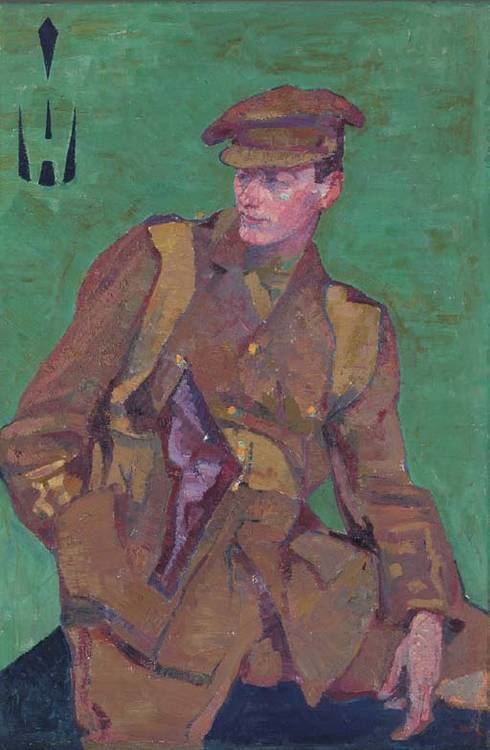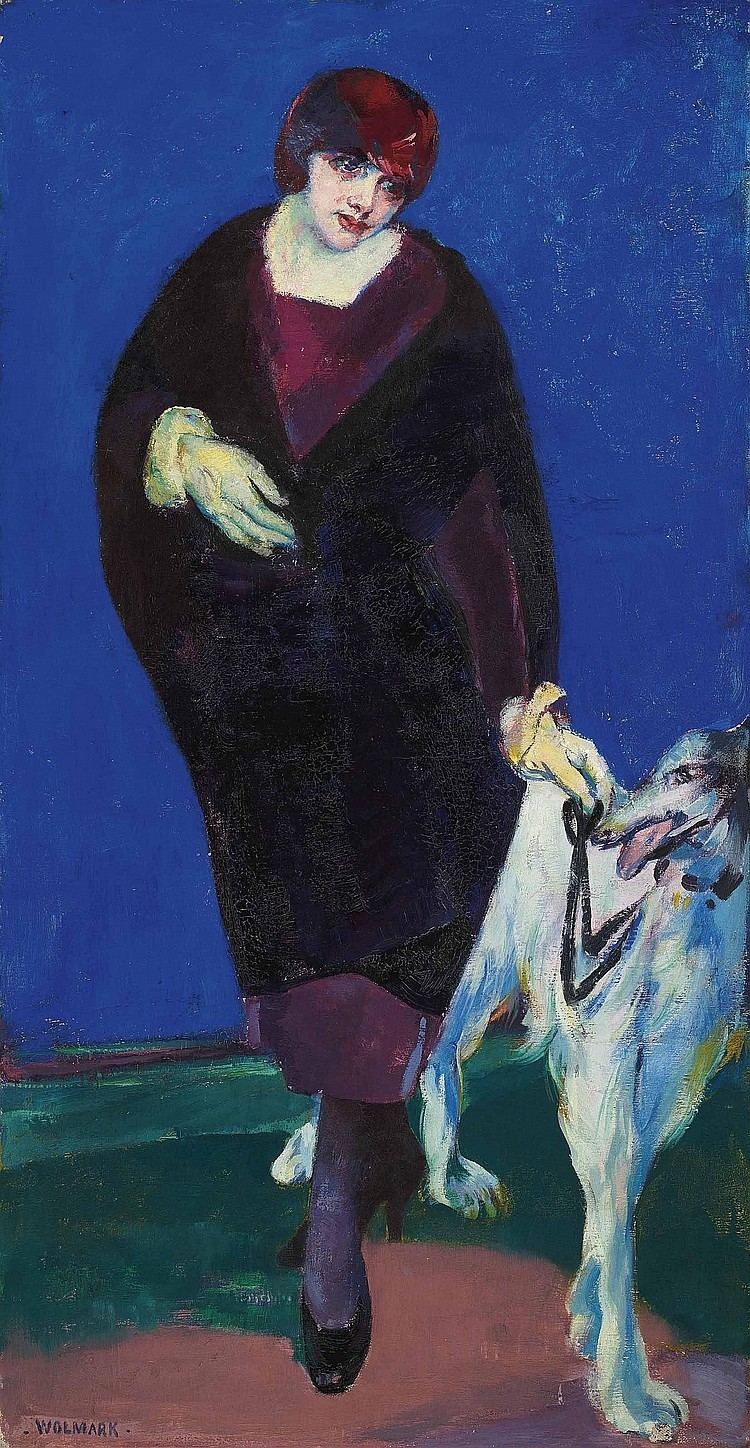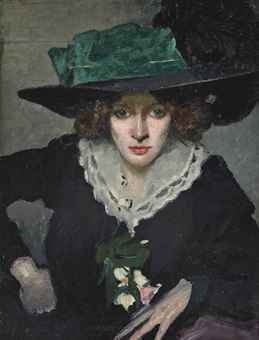Full Name Aaron Wolmark Children 2 sons, 1 daughter Role Artist | Nationality British Name Alfred Wolmark Education Royal Academy of Arts | |
 | ||
Spouse(s) Bessie Leah Tapper (m. 1911) Died January 6, 1961, London, United Kingdom | ||
Alfred Aaron Wolmark (28 December 1877 – 6 January 1961) was a painter and decorative artist. He was a Post Impressionist and a pioneer of the New Movement in Art.
Contents
He was born Aaron Wolmark into a Jewish family in Warsaw, who were amongst the many subsequently fleeing the pogroms of Eastern Europe. The family moved to Devon when he was six. He became a British citizen in 1894.

Education

He studied at the Royal Academy Schools, 1895-8 (1st Silver Medallist for Drawing). There he took the forename Alfred, by which he is known.
Career
Returning briefly to Poland in 1903, he painted works based on Jewish historical subjects. His first one-man exhibition was held at the Bruton Galleries in 1905.

In July 1911, after an artistic epiphany on honeymoon in Concarneau, Brittany, he became influenced by modern French painting, his colour palette and style became post impressionist, and Wolmark jettisoned his early methods in favour of the pioneering 'colourist' path that he followed for the next two decades of his working life. He was one of the British fauves and pitched his tonal divisions to a higher key than any of his contemporaries.
Wolmark kept to traditional genre, and transformed his subjects through the use of flattened forms, built up with a heavy impasto. His daring use of bright colour on some paintings such as "An Arrangement: Group of Nudes" (Christies sale London 16 July 2015) demonstrate a skillset akin to Andy Warhol and earned him the title of ‘The Colour King’.
http://www.christies.com/lotfinder/paintings/alfred-wolmark-an-arrangement-group-of-5917653-details.aspxHe developed into a brilliant colourist. His use of colour was so bright that in an exhibition of the International Society of Artists no English painter dared hang work next to his. His work was finally placed next to Van Gogh's, a matter of considerable pride to the artist in later years. Also exhibited at "Manet and the Post Impressionists" in 1910 at the Grafton Gallery.
Wolmark, like Van Gough, are characterized by a bold application of paint, dominated by heavy impasto (leading Walter Sickert to complain of his work that ‘you cannot see pictures for the paint.’) writing "Mr. Wollmark (sic) presents a curious problem. Beginning with quite reasonable pictures he has of late years put on a turgid and bombastic method of impasto which entirely defeats the painter's intention. Thick oil- paint is the most undecorative matter in the world ... You cannot see Mr. Wollmark's (sic) pictures for the paint." Wolmark met Henri Gaudier-Brzeska and the two became close friends. Gaudier-Brzeska warmed to Woolmark's impassioned New Art and modelled a bronze bust of the young artist in 1913 and ended up celebrating the artists individuality in a face that strongly resembled Beethoven at the time.
He visited New York in 1919, soon after the end of the First World War, and his paintings of the city were exhibited at the Kervorkian Gallery there in 1919-20. While Wolmark had enjoyed a modest degree of success before the Second World War, and continued to exhibit occasionally in London after it, his reputation fell into decline long before his death in 1961 and was only revived in the 1970’s by a new scholarly and critical appreciation of his work. A retrospective of his work was held at Ferens Art Gallery, Kingston upon Hull in 1975.
A gifted portraitist, whose sitters included Thomas Hardy, Aldous Huxley and G. K. Chesterton, Wolmark was also active as a graphic designer, producing book illustrations and posters, as well as undertaking work on costume and stage designs for two Diaghilev ballets in 1911, a set of abstract designs for the stained glass windows of the church of St. Mary’s in Slough in 1915 and a selection of decorative pottery for an exhibition the following year. He was one of the prime movers in setting up the Ben Uri Art Society, 1915.
His paintings are now in many galleries around the world, including the National Portrait Gallery, London, Sheffield and Derby Museum and Art Gallery.
The Tate Gallery Archives under reference GB 70 TGA 721 hold two complete boxes donated by Wolmarks family which contain a number of letters, papers, artworks, photographs and press cuttings including his original diary containing who some of his works were sold to.
